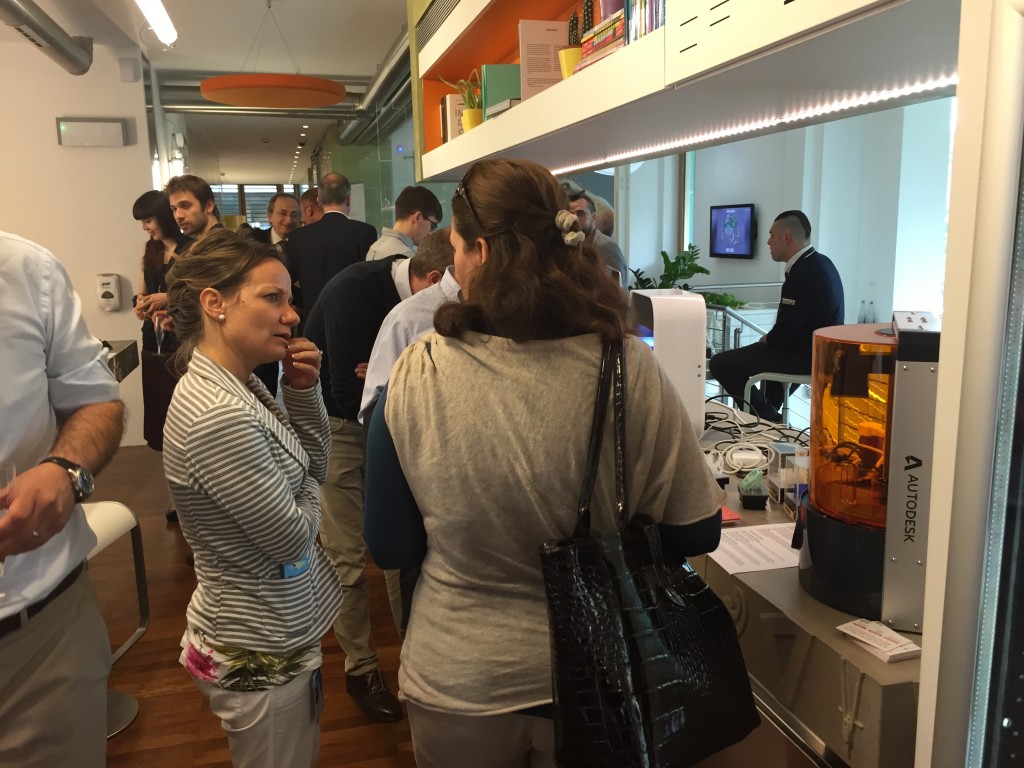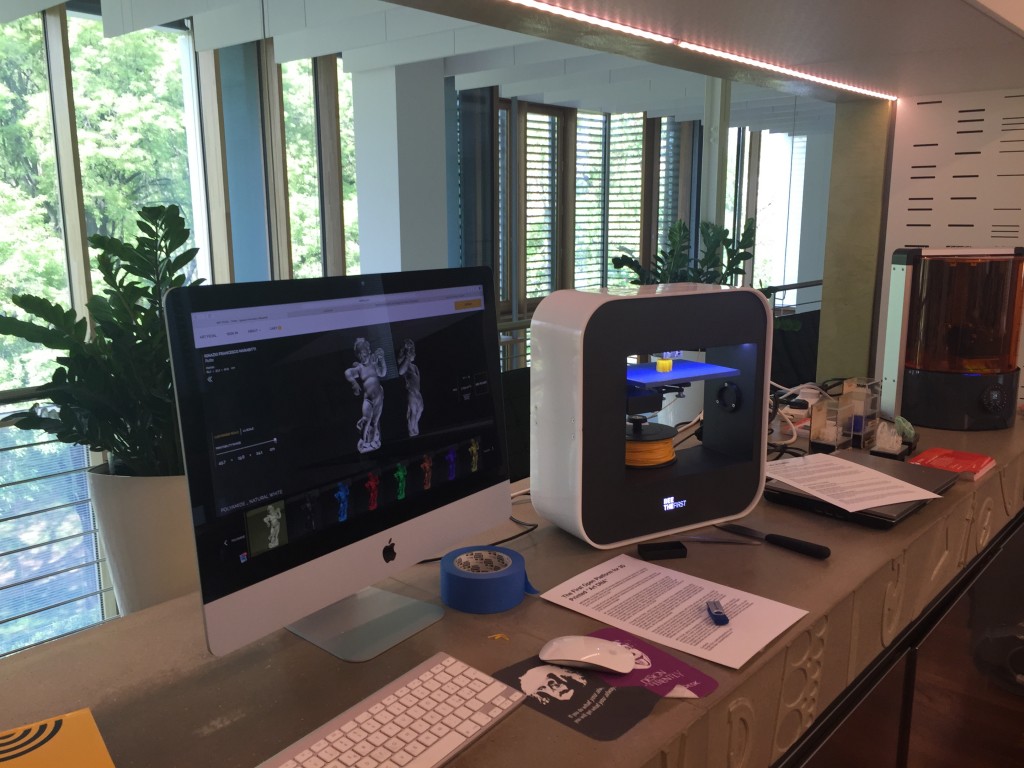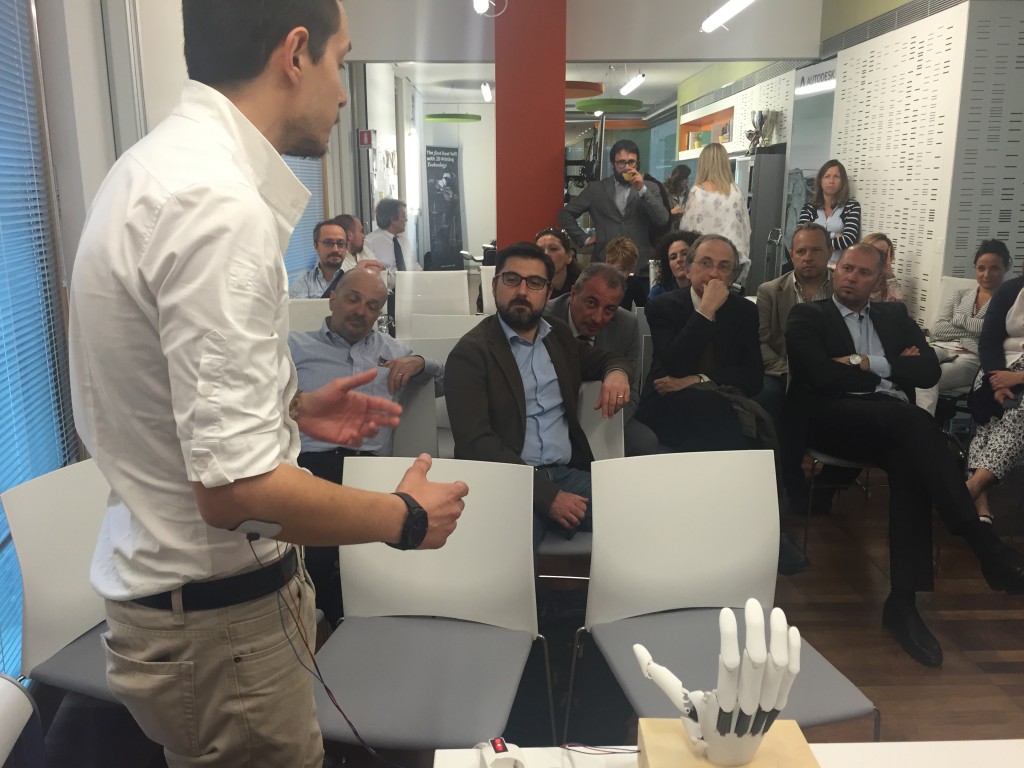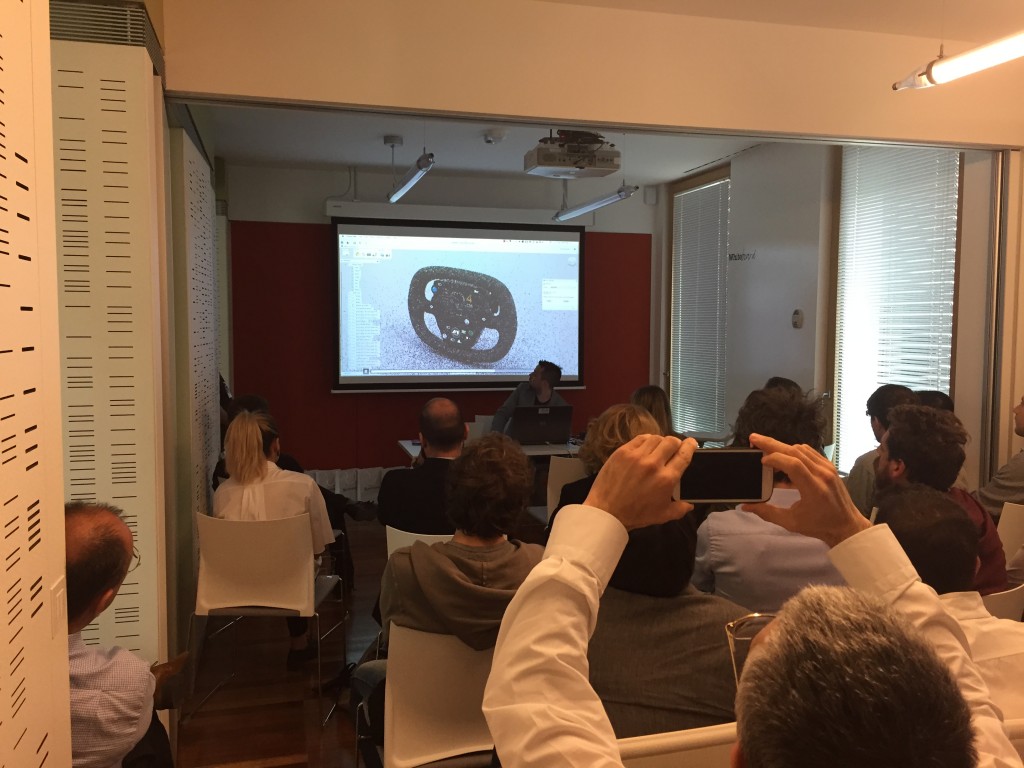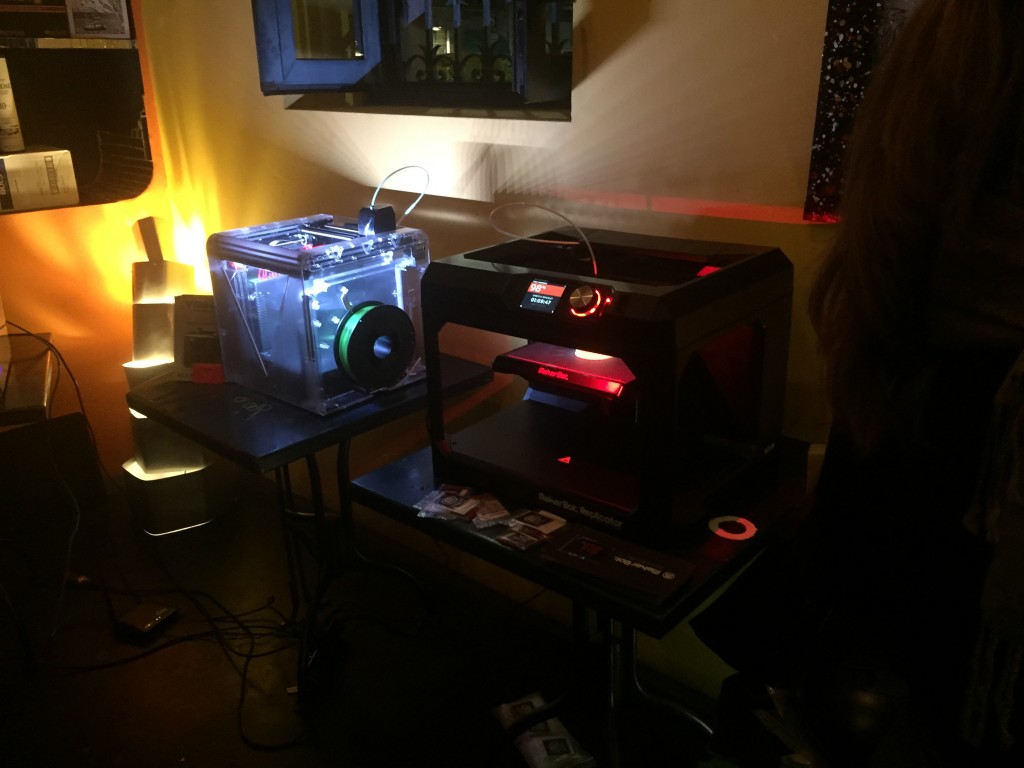Last year, in April 2014, my partners and I organized the Synthesis event during Milan Design Week. It was the first event I had ever organized, but I knew I wanted to share what I had learned as well as my enthusiasm for 3D printing. Others did as well, as 3D printing was already becoming something to reckon with, especially in the world of design. We organized a cultural event to emphasize three aspects: that 3D printing is made up of many different technologies, that new professional 3D printers were becoming affordable even to small design studios, and that 3D modeling software was becoming more accessible to everyone.
To demonstrate these three points we called upon three companies. Growthobjects, a trio of designers from Barcelona who have been experimenting with 3D printing since 2007, helped us show the design conception applied to all the different technologies, by exhibiting the work they have done with FDM, SLA, SLS, SLM, DLMS, binder jetting and other processes. DWS, the leading Italian professional SLA 3D printer manufacturer gave us a prototype of their new XFab, a medium size SLA 3D printer (still) due to hit the market at around €5.000. They represented the hardware part. Autodesk represented the design software; they offered us their central main office location and organized workshops on the 123DApp suite of free 3D modeling tools.
During five days of conferences, we organized several workshops for all participants to learn more about 3D printing and the possibilities it offered designers. The highlight of the five-day event was the final party, where we presented the new work that Growthobjects had created, from idea, to design, to final product, throughout the event itself: the Synthesis Bubble Luminous Object.
This year we moved on from Synthesis to Arthesis. The “thesis”, this time around, was that 3D printing has evolved so much over one year that it has transformed from a set of innovative technologies to discover and into a set of consolidated process which are now being used to make beautiful, finished, final products: anything from yachts and experimental accessories to bionic hands and decorative artworks. Once again, we called upon the designers, the software producers, and the hardware manufacturers, with the difference being that, this time around, the software and hardware manufacturers were one and the same: Autodesk.
Things seem to be moving along the same lines we had drawn in 2014, and yet they have clearly evolved. Instead of one team of designers using many different technologies, this time around we had four teams of designers presenting different products and visions. Instead of the 123DApp entry level 3D modeling tools, this time around we presented Fusion 360, the powerful 3D modeling tool that Autodesk is using to take on SolidWorks.
Instead of the prototype of a 3D printer, as with last year’s event, this time we presented a finished 3D printer which had been on the market since the beginning of the year. Perhaps even more impressive was that we did not create just one experimental object in less than a week, but an entire collection of jewelry, using the STL models submitted by designer from all over the world. In fact, we 3D printed one of the models during a single day of the exhibit: Italian designer Scilla Andrioli Stuart brought in an amazingly intricate “flower-ball” design and Pierre Lin, the founder of what has become the Ember project, played and tinkered with Ember’s software until he was able to 3D print it to perfection.
We 3D streamed the masterpieces from the ARTFICIAL platform directly to BeeTheFirst 3D printer that Diogo Quental, from BeeVeryCreative, sent us for the event. And we even used it to 3D print many of Autodesk’s employees, since they had all been scanned at a previous event in Paris. When we showed the audience, both journalists and visitors, the projects from MHOX, LivreaYacht and Youbionic, they did not just look at us in awe without understanding the complexity of the works, but actually challenged us with pertinent questions about processes and possibilities. They understood the importance that copyright laws are going to assume in a world where creativity will be everywhere and everything, so that specialized attorney Arlo Canella’s words were not just theoretical legal complexities, but practical and useful indications.
This time, for the after hours “3D Print Party”, we had four different 3D printers to play with, and each one of them represented a very different approach to 3D printing: the MakerBot 5th Gen (which we received directly from MakerBot Europe) for maximum ease of use, FABtotum showed off its versatility and multi-functionality, BeeTheFirst once again proved that a 3D printer can look awesome and work well. We even had another low-cost DLP, the Sharebot Voyager, to definitively prove the point that 3D printing has evolved and is now everywhere. I don’t know where we will be next year. One thing I know for sure is that there is no turning back: 3D printing is here to stay and this is just the beginning.



